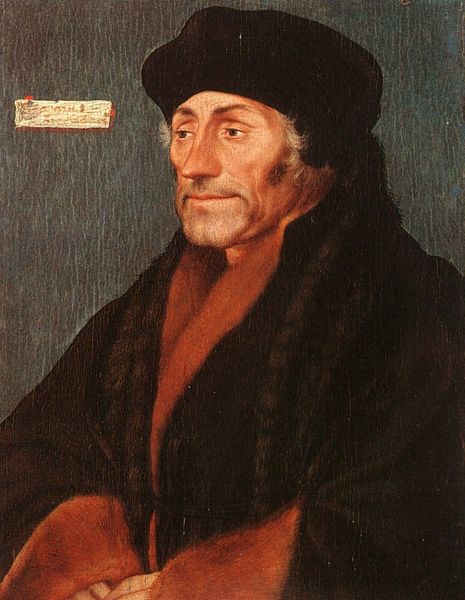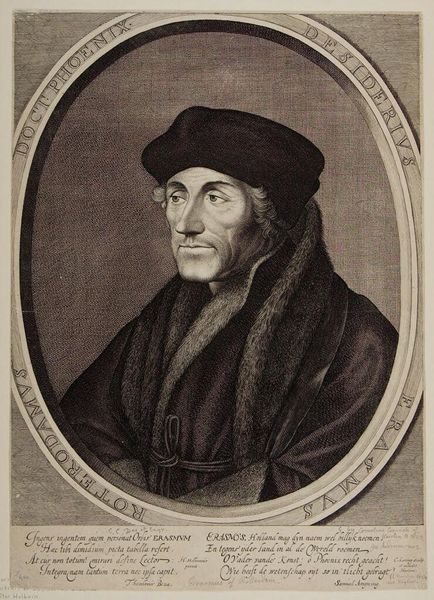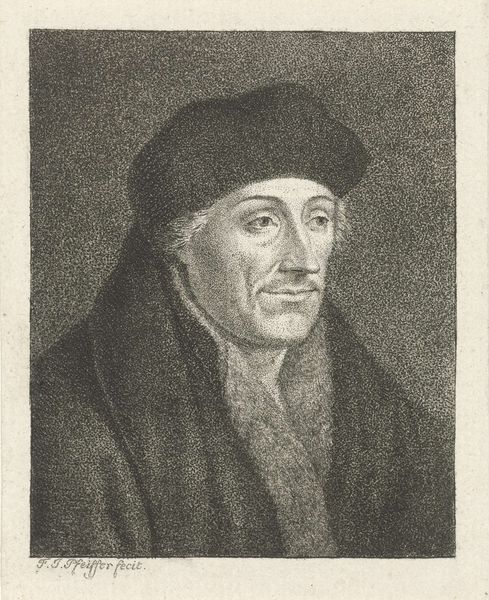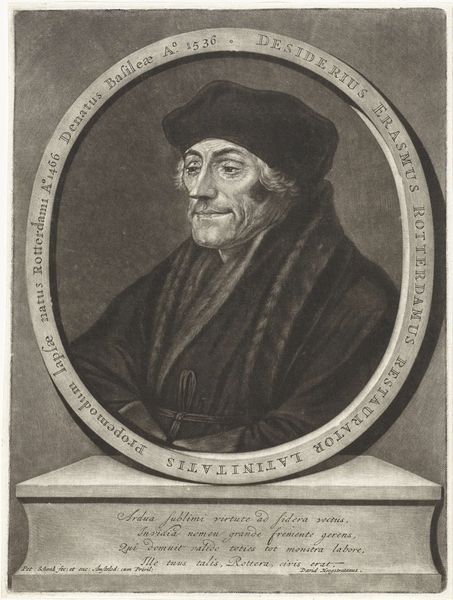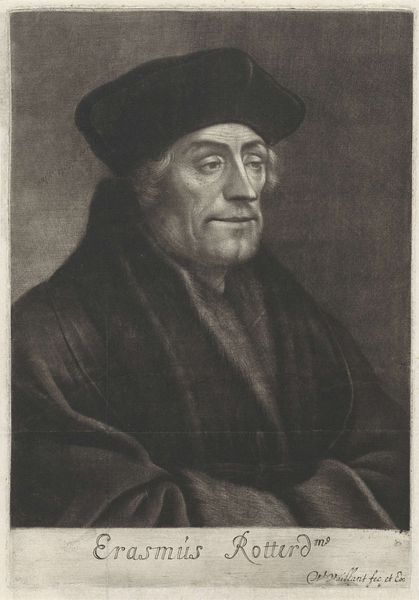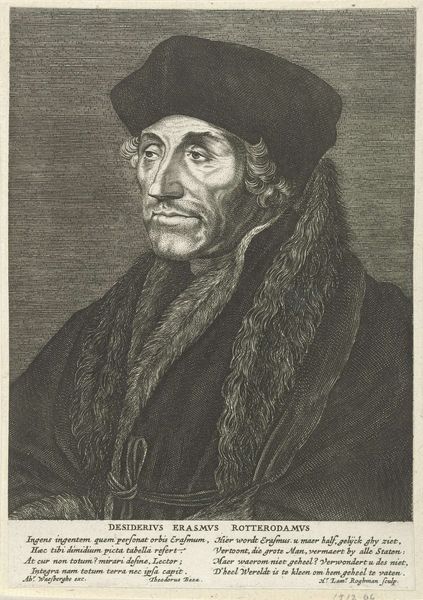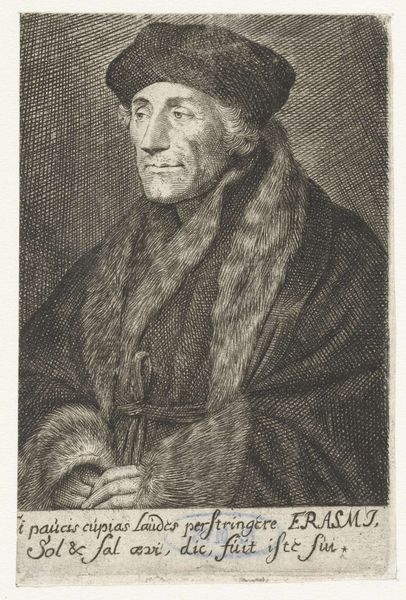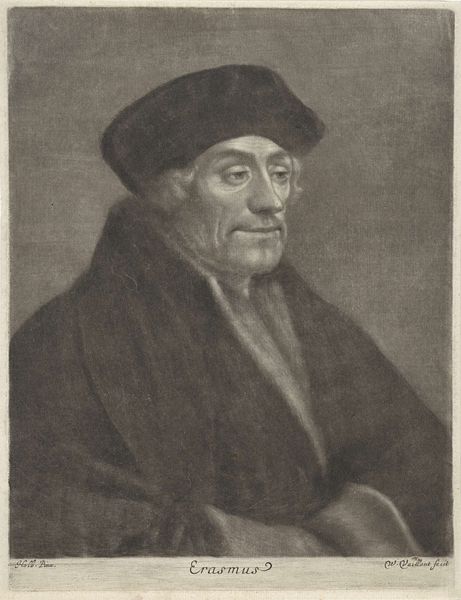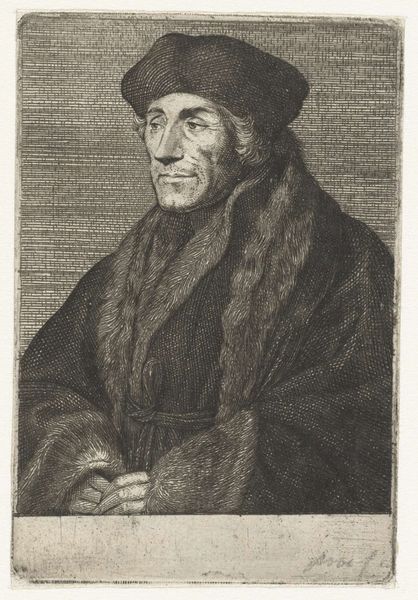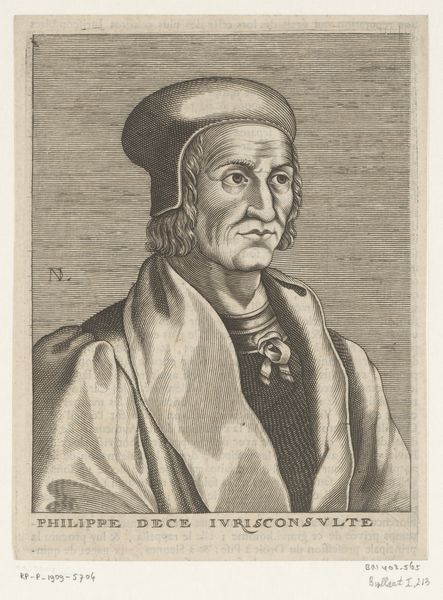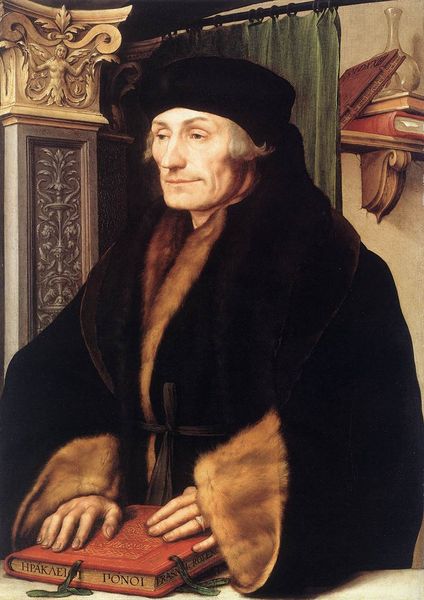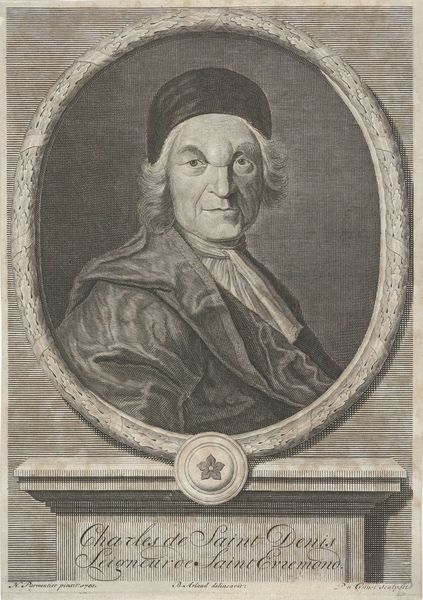
painting, oil-paint
#
portrait
#
painting
#
oil-paint
#
11_renaissance
#
history-painting
#
northern-renaissance
Copyright: Public domain
Editor: Here we have Holbein the Younger’s oil-on-panel painting, "Desiderius Erasmus." There's a real intimacy to it, isn't there? A quietness achieved by the subtle coloring and the tight composition. I’m wondering, looking at this purely from a formal point of view, what grabs your attention? Curator: The stark contrast, primarily. Observe the composition, how Holbein orchestrates dark hues against the skin’s muted tones to draw us directly to Erasmus’ face. It becomes the locus of the painting. Editor: It definitely directs the eye. But is there more to it than just contrast? What about the surface texture? Curator: Precisely. The surface has accrued a history. See the subtle crazing in the paint; these imperfections become integral, they show the painting's own biography through the work of time, yet these are contrasted with the crisp depiction of skin in a bright value spectrum, and fine rendering of the features of Erasmus, a focal tension across surface. Editor: So, it's not just the color, but also the… materiality itself that Holbein is playing with? The marks are the evidence, not just for what he wanted to depict, but to mark and age this representation? Curator: Absolutely. This dialogue between surface treatment, composition, and light, is what grants this piece such lasting aesthetic appeal. How might your perspective shifted now after considering these features? Editor: Well, now I appreciate the painting as a dynamic process as much as a fixed image. The very imperfections contribute to its overall beauty and significance. Curator: Yes, the formal qualities provide a deeper access to its resonance.
Comments
No comments
Be the first to comment and join the conversation on the ultimate creative platform.
